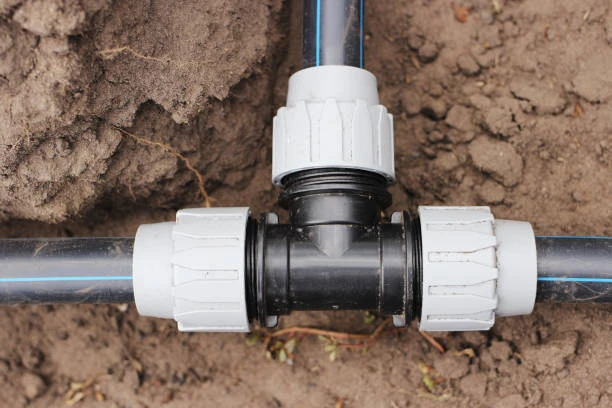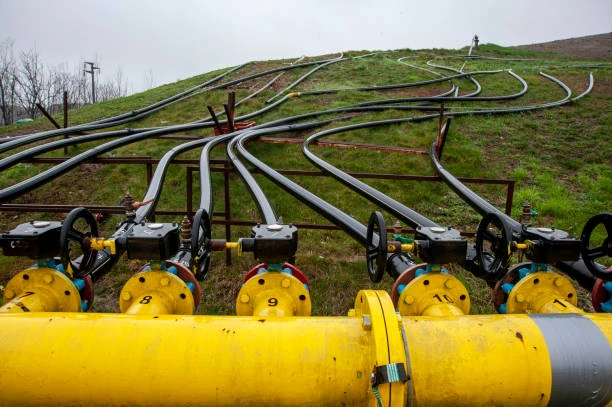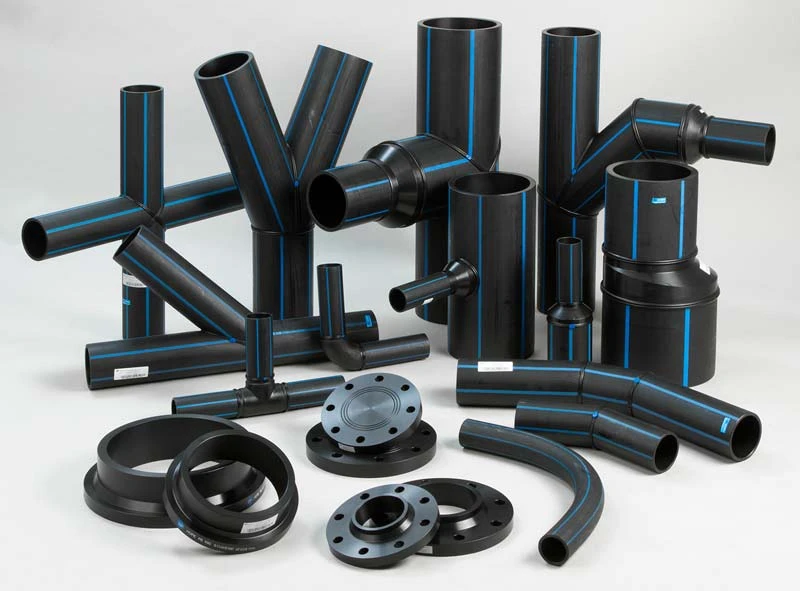The global market for High-Density Polyethylene HDPE pipe is witnessing an unprecedented surge in demand, primarily fueled by ongoing infrastructure development and advancements in technology. With applications spanning various sectors, HDPE pipes are quickly becoming the material of choice for water supply, sewage systems, and industrial use. A critical component in the efficient installation of HDPE pipes is the use of pipe press fittings, which ensure secure, leak-free connections. This article explores the driving factors behind the growth of HDPE pipes, the advantages they offer, and the role of pipe press fittings in modern infrastructure projects.

Understanding HDPE Pipe
High-Density Polyethylene (HDPE) pipes are made from thermoplastic polymer, characterized by their high strength-to-density ratio. These pipes are extensively used for fluid and gas transfer due to their resilience, flexibility, and resistance to various environmental factors. HDPE pipes can withstand harsh conditions, making them ideal for a wide range of applications.
Key Benefits of HDPE Pipe
- Durability: HDPE pipe are resistant to corrosion, chemicals, and environmental stress, providing a longer lifespan than traditional materials.
- Flexibility: The inherent flexibility of HDPE allows for easy installation, even in challenging environments.
- Cost Efficiency: While the initial costs may be higher than some alternatives, the longevity and reduced maintenance requirements make HDPE a cost-effective choice in the long run.
- Leak Resistance: The design of HDPE pipes minimizes the risk of leaks, crucial for maintaining efficiency in water supply systems.
The Role of HDPE pipe
Pipe press fittings are essential in the installation of HDPE pipes. They connect pipes securely, ensuring a tight seal that minimizes the risk of leaks. The benefits of using pipe press fittings include:
- Quick Installation: Pipe press fittings allow for rapid assembly without the need for welding or additional tools, saving both time and labor costs.
- Enhanced Leak Prevention: The design of press fittings ensures a robust connection, reducing water loss and improving the overall integrity of the system.
- Versatility: Suitable for various applications, pipe press fittings are compatible with different materials, making them an invaluable tool in construction and plumbing projects.
Factors Driving Demand for HDPE Pipe
1. Infrastructure Development
One of the primary factors driving the demand for HDPE pipes is the global focus on infrastructure development. Governments and municipalities are investing heavily in upgrading water supply and sewage systems to accommodate growing populations and urbanization. This trend is particularly pronounce in developing countries, where the need for modern infrastructure is critical.
2. Technological Advancements
Advancements in technology have significantly enhanced the production processes of HDPE pipes. Modern manufacturing techniques have improved the quality and consistency of the pipes, making them even more reliable. Additionally, innovations in pipe press fittings technology have streamlined installation processes, further driving the adoption of HDPE pipes.
3. Environmental Sustainability
As environmental concerns become more pressing, the demand for sustainable solutions is on the rise. HDPE pipes are recyclable and have a lower environmental impact compared to traditional materials. Their durability reduces the frequency of replacements, which contributes to lower waste generation.
4. Urbanization and Population Growth
Rapid urbanization and population growth are leading to increased water demand. Municipalities are expanding their water supply systems to meet the needs of their residents. HDPE pipes, with their high flow rates and leak-resistant properties, are ideal for addressing these challenges.
Applications of HDPE Pipe
HDPE pipes find applications across a variety of sectors:
1. HDPE pipe Water Supply Systems
Municipal water supply networks utilize HDPE pipes for their reliability and efficiency. Their ability to transport large volumes of water with minimal leakage makes them a preferred choice for cities worldwide.
2. Sewage and Drainage Systems
The corrosion resistance of HDPE pipes makes them suitable for sewage and drainage applications. They can handle the harsh conditions typically found in these systems, reducing the likelihood of failure.
3. Agricultural Irrigation
In agriculture, HDPE pipes are increasingly being use for irrigation systems. Their flexibility and durability help optimize water usage and enhance crop yields.
4. Industrial Applications
Various industries, including chemicals and food processing, utilize HDPE pipes for their ability to handle corrosive materials. Their strength and reliability make them suitable for numerous industrial applications.
Future Outlook
The future of the HDPE pipes market looks promising, with sustained growth expected in the coming years. As countries continue to invest in infrastructure and prioritize sustainable solutions, the demand for HDPE pipes and associated fittings will likely increase. The integration of pipe press fittings will play a crucial role in this growth, facilitating efficient installations and enhancing the overall effectiveness of water management systems.
Conclusion
The surging demand for HDPE pipes is a testament to their advantages in modern infrastructure development. Driven by technological advancements and the need for efficient water supply solutions, HDPE pipes are becoming the standard in various applications. Pipe press fittings are integral to the successful implementation of these systems, ensuring reliable and leak-free connections. As the world continues to prioritize infrastructure improvements, HDPE pipes will play a central role in shaping the future of water management.
Frequently Asked Questions (FAQs)
- What are HDPE pipes?
- HDPE pipes are high-density polyethylene pipes know for their strength, flexibility, and resistance to corrosion, making them suitable for various applications.
- What are pipe press fittings?
- Pipe press fittings are connectors use to join HDPE pipes securely, providing a leak-free and efficient connection.
- Why are HDPE pipes essential for water supply systems?
- Their durability, cost-effectiveness, and low leakage rates make HDPE pipes ideal for transporting water efficiently.
- How do pipe press fittings improve installation?
- They allow for quick and secure connections, reducing labor time and enhancing the overall reliability of the pipe system.
- In what industries are HDPE pipes use?
- HDPE pipes are utilize in municipal water supply, sewage and drainage systems, agriculture, and various industrial applications, showcasing their versatility.


















